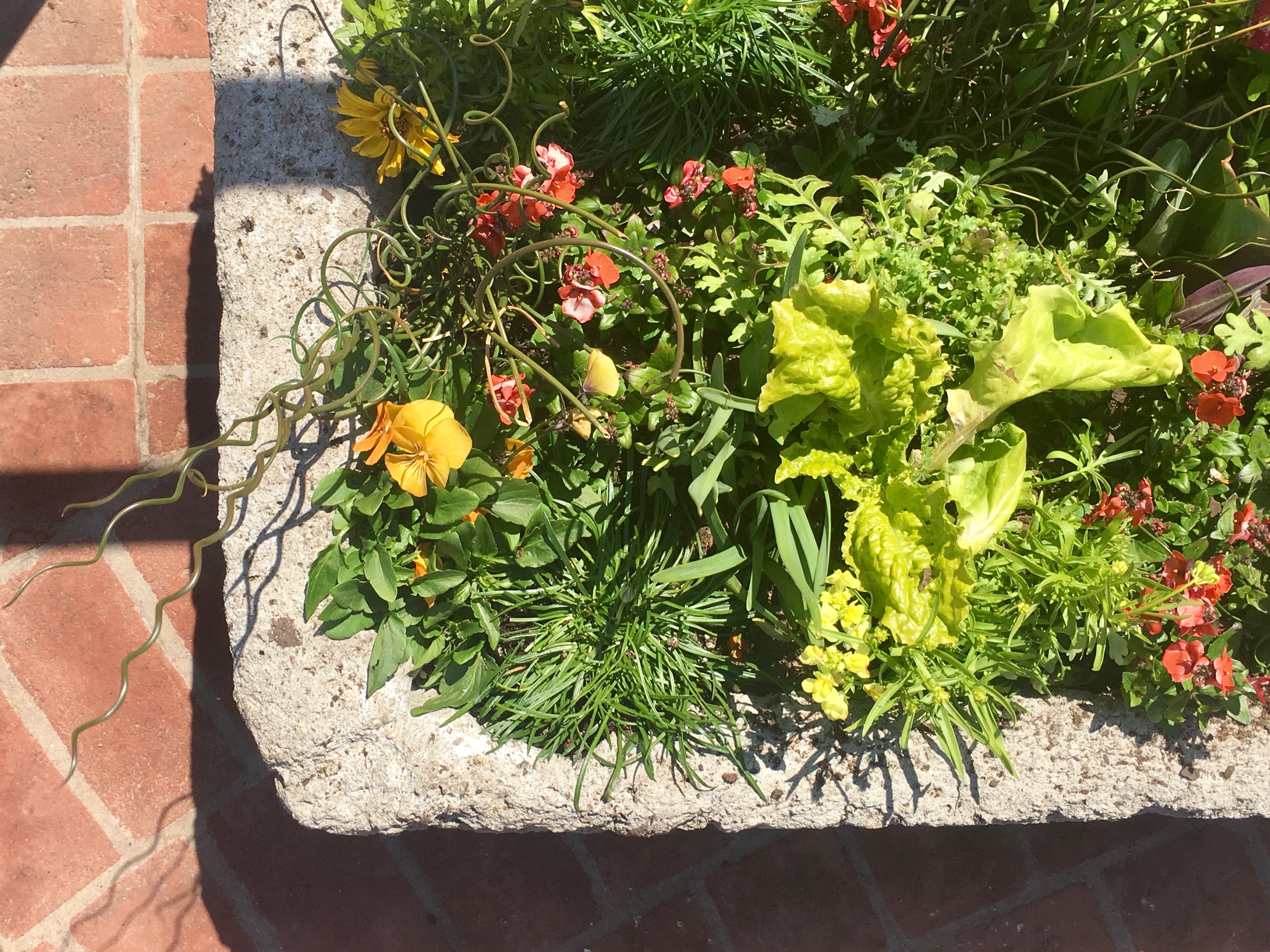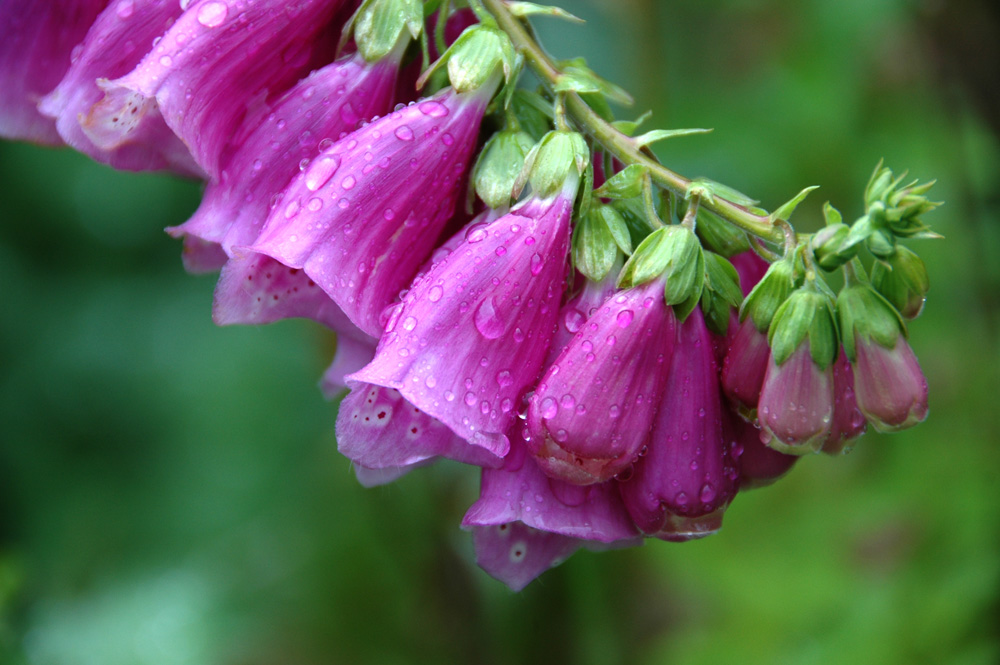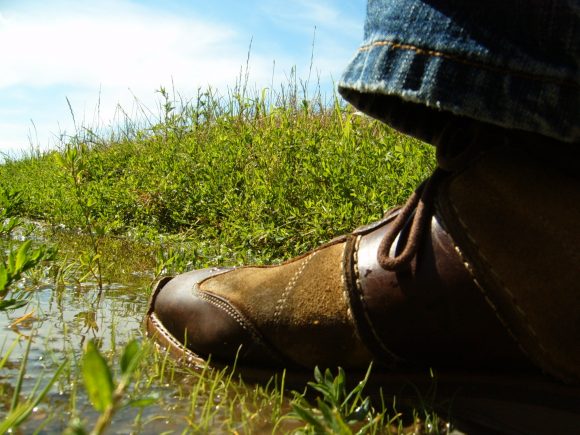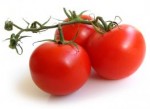Show of hands: Who’s ready for spring?
We are, too.
Thankfully, the bright, blooming containers in the Heritage Garden at the Chicago Botanic Garden were planted this week, welcoming spring and warm fuzzies along with them. Just standing near these spring annuals makes us happy, and for horticulturist Tom Soulsby—who’s been planting these signature troughs for the past 15 years—it’s one of his favorite things to do each spring.
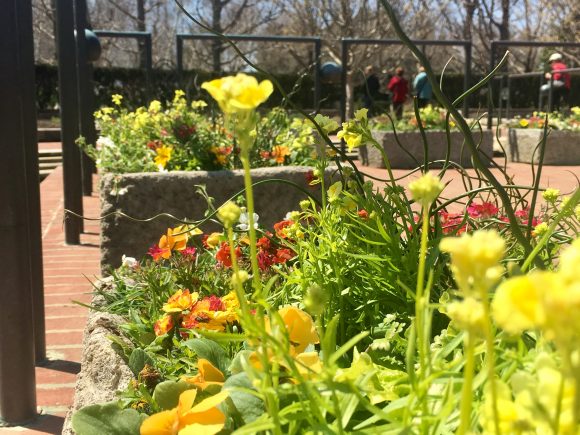
“After a long, drawn-out winter, it’s nice to have something that cheers people up,” said Soulsby. “It cheers us up, too, to see visitors smiling.”
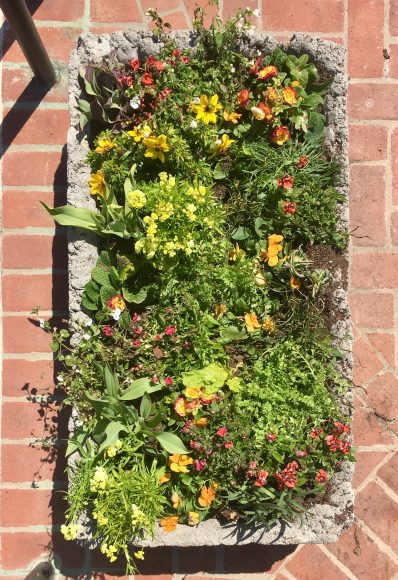
People look forward to these 41 containers each spring, which is something Soulsby keeps in mind when he’s planting them. By the time April rolls around, people are craving lush, overflowing color after months of dreary gray, so he “overplants” the troughs to make them look full from the get-go.
Poking through the red, orange, and yellow flowers this year is an unusual, edible treat: some Lactuca sativa ‘Australian Yellowleaf’ lettuce. “I’ve never used lettuce before in a container, but it’s a fun alternative for foliage accents, and can tolerate cooler weather,” said Soulsby.

That’s another trick: all of the plants Soulsby picked for these troughs can handle cold and a light frost (but we’re hoping they won’t have to). Some—like the Narcissus ‘Fruit Cup’ daffodils and Tulipa praestans ‘Shogun’ tulips in this year’s troughs—will bloom later. It’s all about balance, Soulsby said—finding a mix of plants that will bloom at varying times.
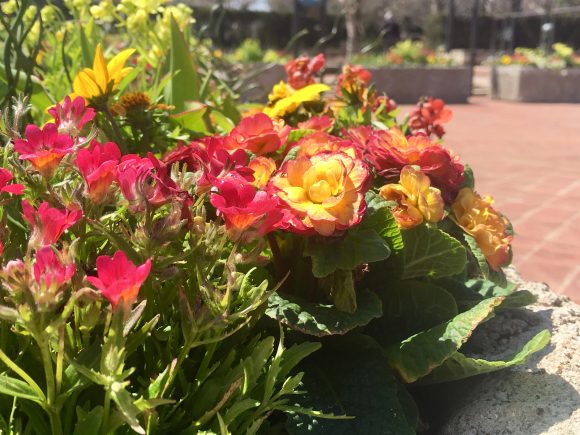
Here’s hoping Mother Nature takes a cue from these troughs.
©2018 Chicago Botanic Garden and my.chicagobotanic.org

